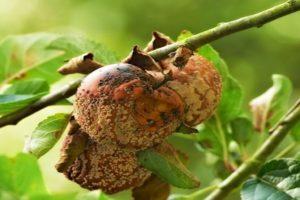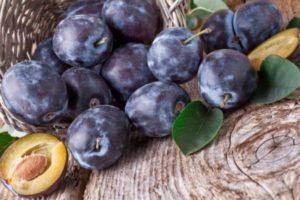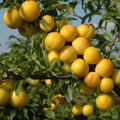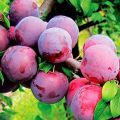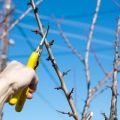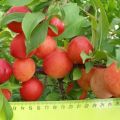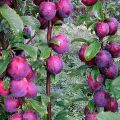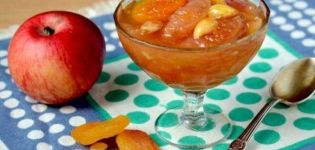Description of the best varieties of yellow plum, planting, growing and care
Yellow varieties of plums are still rarely found in summer cottages. But in terms of taste, they are in no way inferior to the usual blue varieties. Yellow-fruited varieties differ in terms of ripening and a number of other characteristics.
Content
- 1 Advantages and Disadvantages of Yellow Plum
- 2 Characteristics of early maturing species
- 3 Mid-season varieties
- 4 Late ripening
- 5 Large-fruited
- 6 Self-fertile
- 7 What varieties of plums are best for the Moscow region and the middle lane
- 8 How the yellow plum blooms and bears fruit
- 9 Pollinators
- 10 Disembarkation rules
- 11 Agricultural technology and care
- 12 What problems can you face when growing
Advantages and Disadvantages of Yellow Plum
The advantages of yellow-fruited varieties of fruit include the following characteristics:
- Yields are above average annually.
- Immunity to most fruit tree diseases.
- Fruit taste.
- Most species survive freezing winters.
- Universal use in cooking.
The disadvantages of yellow plum include a thin skin in some varieties, which affects the keeping quality of the fruit. In addition, such hybrids are not suitable for most latitudes of Russia due to the fact that climatic conditions are not quite suitable for growing trees.
Characteristics of early maturing species
It is important to study the description of the yellow-fruited plum due to the fact that there are several main varieties in terms of ripening. The early plum ripens in early summer, but after harvesting it is not stored for a long time.
Yellow Ball
A characteristic feature of the Yellow Shar hybrid is the taste of the fruit. They resemble a mixture of peach and pineapple. The fruits are small. From a distance, the tree can resemble sea buckthorn. The variety is frost-resistant, able to withstand frosts down to -50 degrees. The tree bears fruit in the third year after planting a seedling.
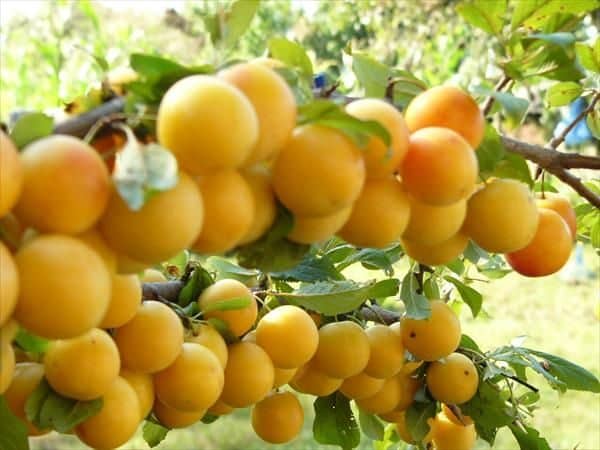
Altai Jubilee
The average weight of the fruit is 15 g. The fruits are elongated and oval. Unlike other varieties, Altai Yubileinaya has a more saturated skin tone. The skin is covered with a waxy coating. Ripe fragrant fruits.
Amber Mlievskaya
Large-fruited variety, fruits on average are up to 70 g. Fruits are of the correct rounded shape. The taste of the pulp is sweet with a grape flavor. The skin is thin, so after harvesting the fruits are not stored for a long time. The yield is about 55 kg.

Honey
The honey hybrid tastes like flower honey, which distinguishes it from other yellow-fruited varieties. It can be noted that the fruit has a slight sour taste. Fruits are large, average weight is 30-50 g, round shape. The skin is thin, but dense with a waxy bloom.
Mid-season varieties
Mid-season plum varieties begin to ripen towards the end of summer.
Such hybrids are characterized by a longer keeping quality compared to earlier varieties.
Ochakovskaya white
Ochakovskaya Belaya has a low frost resistance. Moreover, the trees are shade-tolerant. The yield is low, but the variety is quite popular with gardeners. After all, it is difficult to find a more delicious plum than Ochakovskaya Belaya. The fruits ripen in early September. On average, the mass of fruits is 40-55 g.
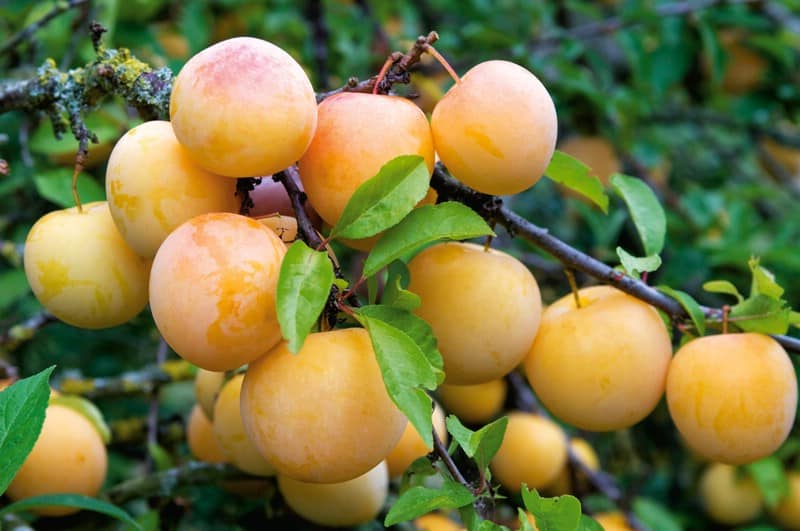
Compote
Plum Kompotnaya is suitable for growing in central Russia. Fruits weighing 30-45 g, regular oval shape. The plum is sweet and sour, juicy and aromatic, the skin is thin. The yield is high and stable. Ripe fruits are suitable for fresh consumption and for preparing preparations for the winter.
Late ripening
The advantage of late-ripening varieties is that after harvesting, the fruits are stored for some time. But they are often inferior in taste to early and mid-early representatives.
Golden large
Large-fruited late hybrid, fruit weight is 40-50 g. The skin is pink-yellow, dense, slightly pubescent with a slight waxy bloom. The first fruits ripen in early September. Plum Golden large belongs to partially self-fertile varieties. The yield is average, up to 30 kg are harvested from one tree. The large golden one is winter hardiness, the tree tolerates frosts down to -35 degrees. In addition, the variety is resistant to drought and disease.
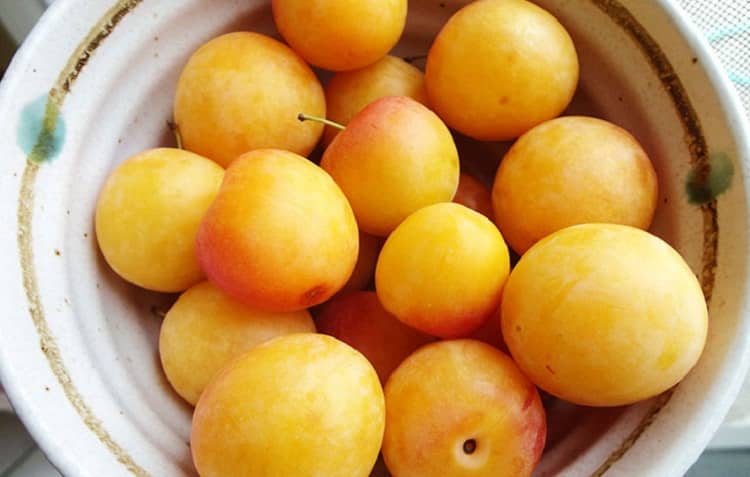
Yellow Afasca
The fruits of the Yellow Afasca plum ripen in the second decade of August. Fruit ripening completely takes place in September. The tree is medium-sized. The fruits are large, the mass is from 45 g. The skin is dense, with a waxy coating. The stone is difficult to separate from the pulp.
The pulp is juicy and sweet to the taste, with a sour taste. The tree is winter-hardy, rarely suffers from fungal diseases.
Egg yellow
Egg yellow is considered one of the most ancient and rare varieties. This species is endowed with a large number of shortcomings and is grown mainly by collectors, and not by summer residents for harvesting. The fruits are large, sour taste. Fruit is not stored for a long time after harvest. Plum is suitable for preparing compotes and pastilles.

Svetlana
The advantage of the Svetlana variety is that there is no need to trim the crown every year. The hybrid is self-fertile, you will have to plant pollinating trees nearby. Fruit ripening continues until the last days of September. Fruiting begins in the 5th year after planting the seedling. The average weight of fruits is 25 g. The seeds are difficult to separate, the pulp is sugar with a sour taste.
Renklode Michurinsky
The maximum weight of Renklod Michurinsky plums is 35 g. The pulp is orange in color, juicy and sweet with a slight sourness. The stone separates well from the pulp. The variety is fruitful, winter hardiness at an altitude, annual fruiting. The crown is of medium thickening, the tree is fast-growing.

Hopt
Light yellow fruit. There is a whitish coating of wax on the skin. Small-fruited plums, weight is 15-20 g. There is a noticeable seam on the side of the skin. The skin is thinner than that of other varieties, the pulp is juicy, sweetish, sometimes there is a sour taste. The seed is large, it can be easily separated from the pulp. Plum Hopty refers to self-infertile hybrids. Fruiting begins 2-3 years after the seedling is planted.
Mountain
Gornaya plum belongs to the high-yielding varieties that can withstand severe frosts. The crown is round, not thickened, the tree is medium-sized.The fruits are large, the mass ranges from 28 to 47 g. The pulp is yellow, the shape of the plums is round. The pulp is sugary with a sour taste. The seed does not separate well from the pulp. The harvest ripens in the second decade of August, the last fruits ripen in early September. The fruits are versatile in use.
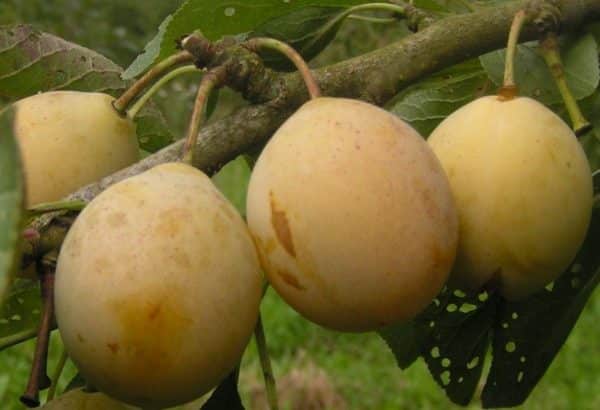
Large-fruited
Large-fruited plum varieties are considered the most popular. This is not surprising, because every summer resident, growing fruit trees in his area, is trying to achieve maximum yield. And the larger the fruit grows, the better.
Gigantic
The main trunk belongs to the category of tall and grows within 4 m. Crohn's with abundant thickening. After planting, a young seedling bears fruit in the 3rd, sometimes 4th year. Productivity within 36-41 kg. Plums weighing 40 g. The skin is dense, the pulp is sweet and juicy.
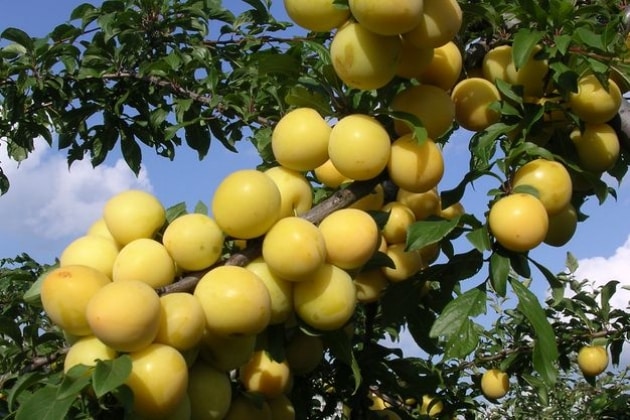
Angelina
A hybrid called Angelina belongs to the tall category. The trunk can grow up to 3 m. Fruits are oval, large. The mass ranges from 113 g. The skin is dense and glossy. The pulp is juicy, sweet and sour taste. The seed is small in size, it is easily separated from the pulp. Angelina begins to bear fruit in the 2nd year after disembarkation.
The president
Plum President is prone to rapid growth. Anti-aging pruning will have to be done twice a year. The fruits are large, weighing from 50 to 100 g. The skin is dense, with a waxy coating. The pulp is sweet, easily separated from the stone. The tree is able to withstand frosts down to -25 degrees.
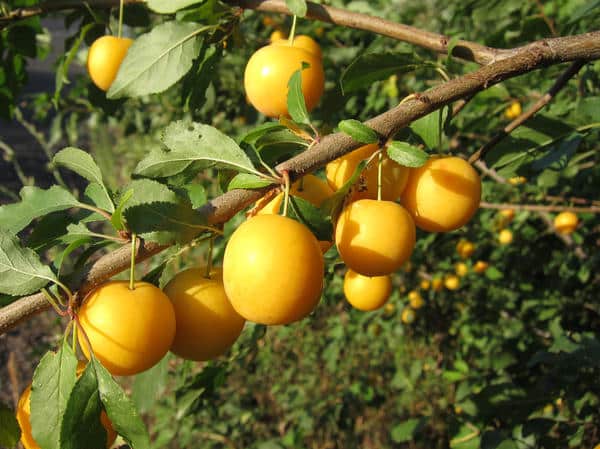
Starting
Plum Startovaya belongs to the winter-hardy, there is no need to cover the tree for the winter. It tolerates heat calmly, although additional watering may be required in case of prolonged drought. Plum begins to bear fruit early. Up to 55 kg of harvest is harvested from one tree. Plum Startovaya has a long shelf life, it is 3 weeks.
Self-fertile
Self-fertile varieties, in comparison with others, have a significant advantage. There is no need to plant a pollinator next to such a plant.
Golden ball
It is considered a variety with an early maturity of the crop. Belongs to the self-fertile category. The first ripe fruits appear on the tree in July. The fruit has a sugar flavor that is similar to peach. Weight ranges from 37 to 51 g. About 77 kg are harvested from one tree.
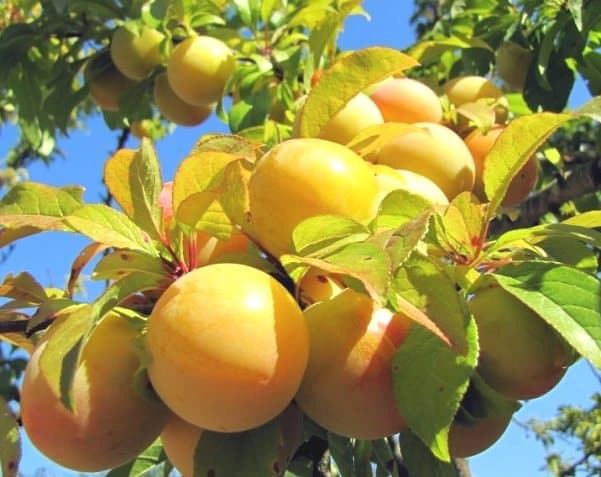
Golden large
Plum Golden large belongs to winter-hardy and drought-resistant varieties. In addition, the plum is highly resistant to disease. The yield is late, the first fruiting begins in the 5th year after planting. Up to 27 kg of harvest is harvested from one tree.
Covenant
The height of the tree is about 4 m, the plant bears fruit in the 4th year after planting. Flowering, like fruiting, is late. The weight of ripe plums is about 40 g. Due to the sun, the skin tone turns from yellow to pinkish. Ripening begins in the second half of August. The skin is slightly waxy.
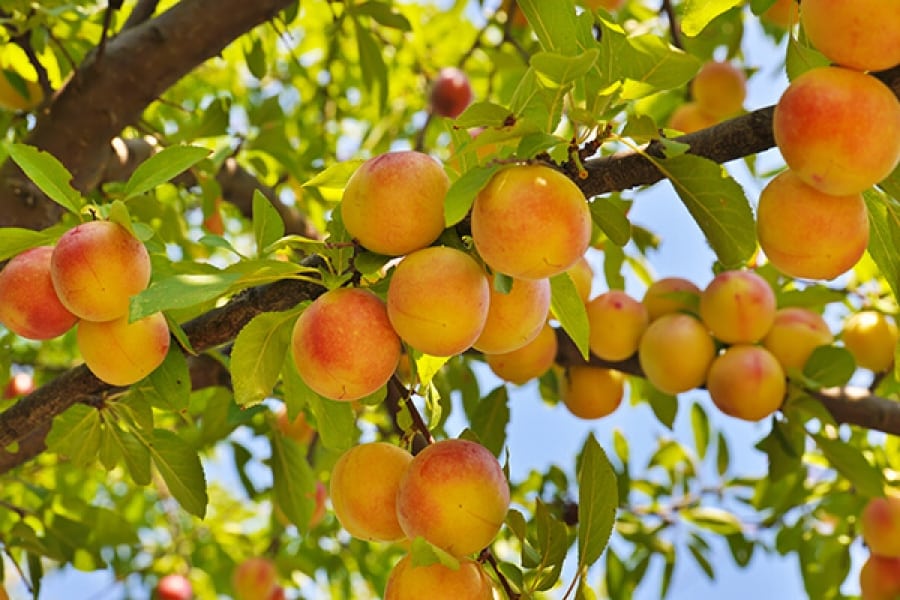
Honey white
This variety is resistant to severe frosts. Fruit ripening occurs in the last days of July - early August. The average weight of fruits is from 40 to 55 g. 43 kg of harvest are harvested from one adult tree. When fully ripe, the peel takes on an orange tint.
What varieties of plums are best for the Moscow region and the middle lane
Finding the best plum varieties for the regions of the Moscow region and the middle lane is not as difficult as, for example, for the northern latitudes. Most varieties of culture survive freezing temperatures in this climate.
Yakhontova
Plum Yakhontovaya refers to tall. The tree can reach a height of 5-6 m. The crown is compact, wide. The fruits are round in shape, the peel is dense with a waxy bloom. The pulp is juicy, the seed is simply separated. The weight of the fruit is 35-45 g. The taste of plums is sweet with sourness. The tasting score is maximum and is 5 points out of 5.
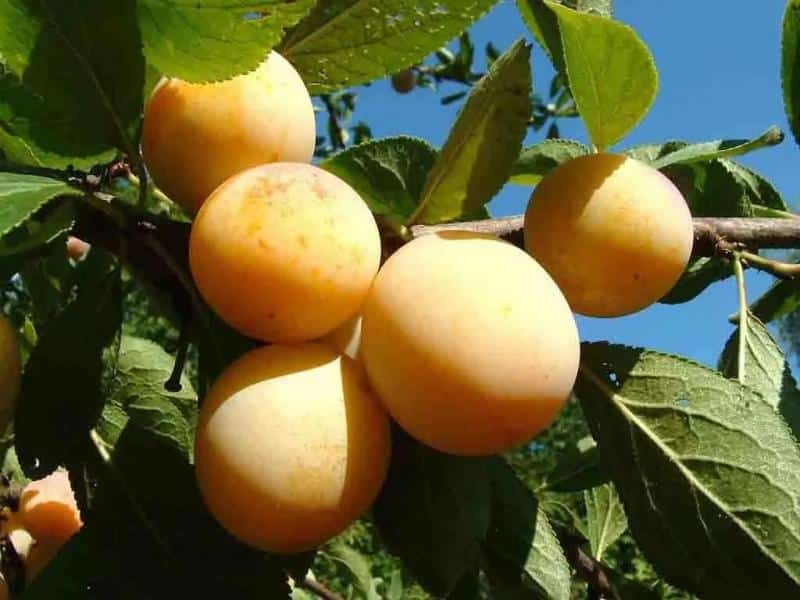
Russian plum
Russian plum belongs to the early ripening varieties. The yield of the tree is high and is about 45 kg.The collected fruits, if they have not reached biological maturity, are capable of ripening. Fruits are large, weighing up to 55 g. Fruits are sweet and sour, the pulp is juicy. Skin with a white waxy coating. The downside of the Russian plum is its rapid growth. After 2-3 years, you have to carry out anti-aging pruning.
Scythian gold
The Scythian gold is not a plum variety, but a type of cherry plum. But cherry plum in taste and appearance is very similar to plum, since it is a kind of home culture. Scythian gold belongs to medium-sized, trees rarely grow more than 2 m. Abundant flowering, large fruits, weight 40-55 g. A small seam can be seen on the skin. The skin is dense, covered with a white waxy coating.
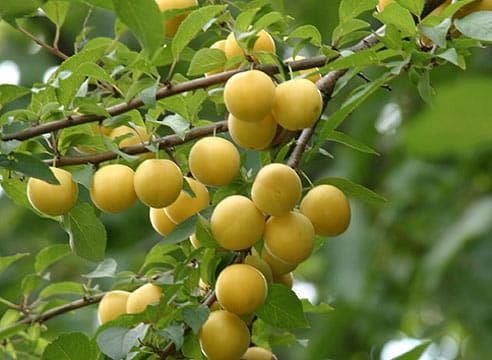
Hungarian Bogatyrskaya
Hungarian Bogatyrskaya is a medium-sized, not thickened tree. Inflorescences are collected from 2-3 flowers. Ripe elliptical plums, weighing from 40 g. Maximum weight - 60 g. The skin is thick, with a thin waxy coating. The stone is small, practically does not separate from the pulp. The pulp is dense, greenish with a honey flavor.
Hungarian Bogatyrskaya belongs to frost-resistant varieties. But it is hard to tolerate prolonged dryness of the earth.
Traveler
The fruits of the Traveler plum reach a mass of 20-35 g. The side seam is poorly expressed. Waxy skin. The pulp is bright orange, soft and juicy. It is difficult to separate the peel from the pulp. Traveler is a pollinating plum for some other species. The advantage of the variety is resistance to severe frosts. Drought resistance is average.

How the yellow plum blooms and bears fruit
Plum hybrids with yellow fruits bloom in the same way as all other varieties. Inflorescences of a cream shade. Fruiting depends on the variety. But most hybrids begin to bear fruit towards the end of summer or fall.
Pollinators
Only self-fertile plums require pollinating trees. Such hybrids are selected for the flowering period. It is important that this period coincides with the flowering of the self-fertile variety. In addition, you can attract bees to the garden. For this, the inflorescences are sprayed with water diluted with honey.
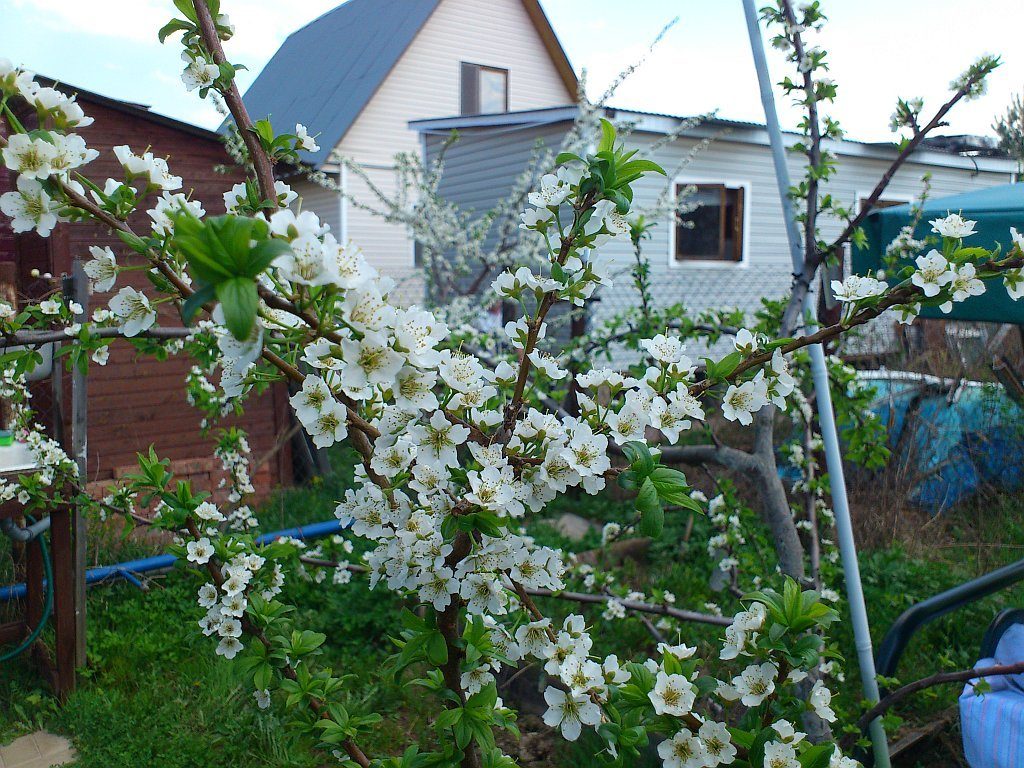
Disembarkation rules
All varieties of plums are planted according to the same principle. The process is not much different from other fruit trees:
- A few weeks before planting the seedling, they begin to prepare the soil.
- Dig a hole, mix the topsoil with manure, wood ash and mineral fertilizers.
- The top layer of soil with fertilizers is poured to the bottom.
- After 3 weeks, start planting a seedling.
- The tree is placed in a hole, the roots are carefully straightened and covered with soil.
- Near the trunk, the earth is tamped.
At the end of planting, the soil is watered abundantly with warm water. If necessary, a stake is driven into the center of the pit and a seedling is tied to it.
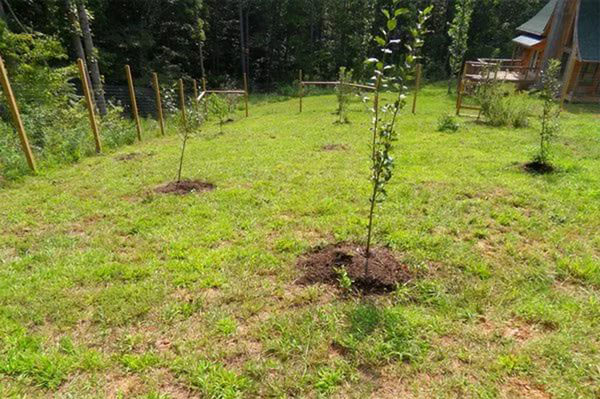
Timing
The optimal time for planting plum seedlings is September-October. You can plant a plum in the spring, but then it will begin to bloom in the year of planting, which will not have a very good effect on the yield. The advantage of the autumn procedure is that during the winter the seedling will have time to take root, and in the spring it will begin active growth with renewed vigor. In summer, planting a plum is not at all desirable.
Site selection and soil preparation for planting
Plums prefer to grow in open, sunny areas. Seedlings can be planted in partial shade. The main thing is that the plant is in the shade for a smaller part of the day. Plums are not picky about the soil. Light and fertile soils are suitable for the normal growth of the seedling.
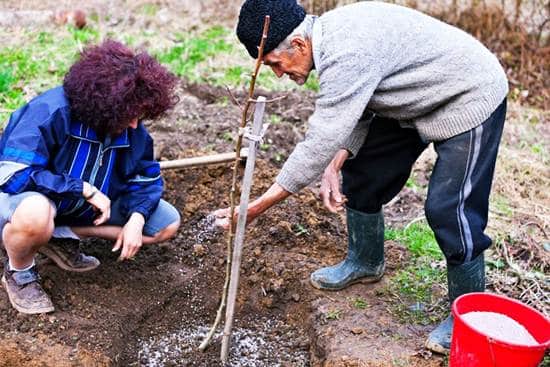
Landing scheme
The distance between adjacent trees should be at least 3 m. Especially if the plum is tall or with a spreading crown.
Agricultural technology and care
Through constant tree care, you can achieve maximum yields. A one-year-old seedling must be regularly looked after so that it grows healthy and subsequently gives many fruits.
Watering
Plums are not often watered.Some varieties that do not tolerate prolonged drought require additional moisture. In most cases, plums require 4 irrigations per season:
- The first watering is carried out in the first half of the season, when bud formation begins.
- The second time the plants are hydrated during flowering.
- The third watering is carried out during the formation of ovaries and fruits.
- The last time the trees are irrigated is in the fall before the cold weather sets in. This will prepare the plum for winter.
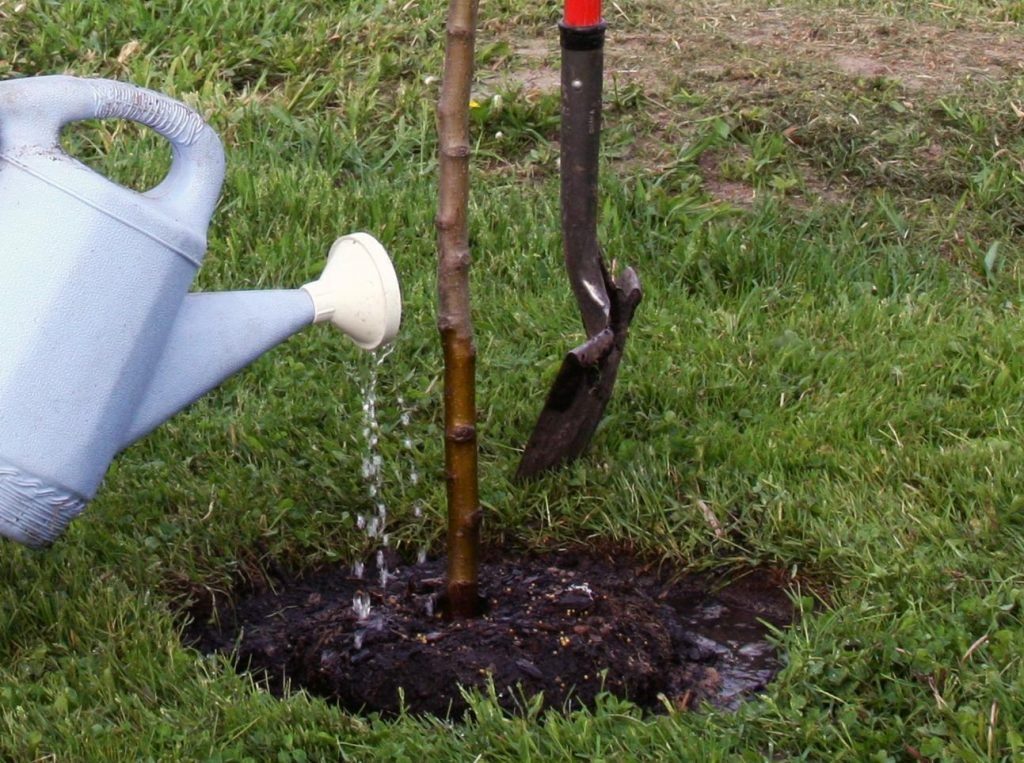
Plants should only be watered with warm water. One tree takes 5-8 liters of water. The amount of irrigation should be increased in the spring for the seedlings. They can be watered every week. For one seedling, 3 liters of water is enough.
Top dressing
Top dressing, like watering, is applied 4 times per season. Plum needs nitrogen in the first half of the season. Nitrogen fertilizers accelerate growth. Ammonium nitrate and complex fertilizers, which include nitrogen, are added to the soil. You can also use wood ash. In the summer, trees need phosphorus and potassium. Superphosphate, bone meal, ammophos are introduced into the soil. From potassium dressings, nitrophoska is suitable. In the fall, manure and wood ash are added to the soil.
Mulching
The soil is mulched mainly in autumn. This measure protects the tree root system from frost. In addition, if you add mulch, then the soil will be constantly saturated with nutrients and always moist.
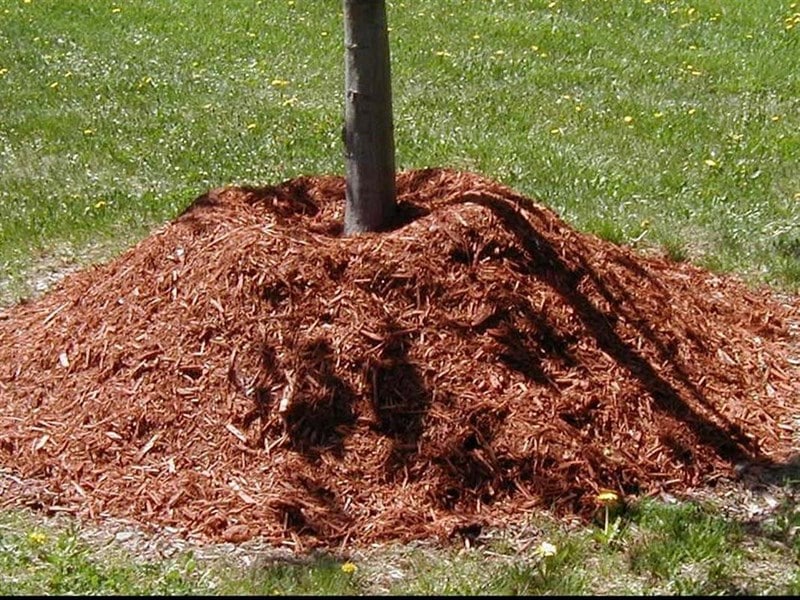
Peat, manure, sawdust or straw are used as mulch. The layer should be at least 15 cm. Before mulching, the soil near the trunk is dug up and all weeds are removed. It is important to make sure there are no weed roots left in the soil. Otherwise, after a while, the weeds will reappear on the site.
Pruning
Not all plum varieties need pruning. Low-growing and non-thickened hybrids can be pruned every 3 years. Vigorous plums need to be pruned annually. It is necessary to remove all young growth and part of the branches. 3-4 skeletal branches are left, all the rest are cut off. In addition, the top is also removed. Sanitary pruning is carried out in autumn. Dry and damaged branches are cut with a sharp pruner. Places of cuts are treated with a solution of potassium permanganate or iodine solution. However, it is advisable to handle in all cases when you have to delete branches.
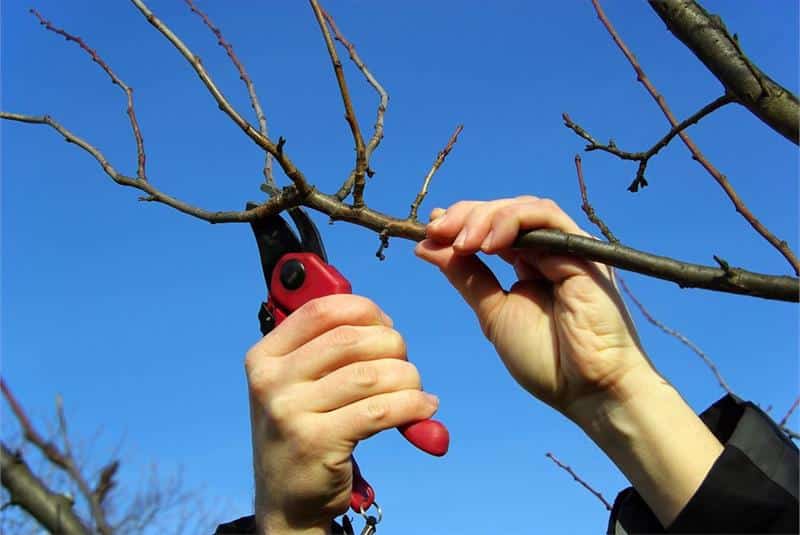
Preparing for winter
Most varieties of plum do not need much winter preparation. Many trees are quite capable of surviving severe frosts. The only thing that needs to be done is to cut the plum before the onset of cold weather. Then it is advisable to dig up the soil and mulch the soil near the trunk.
In addition, the lower part of the trunk should be covered with dense material so that the bark is not gnawed by mice and other rodents.
It is advisable to cover newly planted seedlings for the winter (even if it happened in the spring). Cover young plum trees with spruce branches or wormwood.
Prevention and treatment
If you do not plum, even hybrids with high immunity can catch diseases. Among the common problems of plums are:
- scab;
- powdery mildew;
- rust;
- root cancer;
- moniliosis;
- fruit rot.
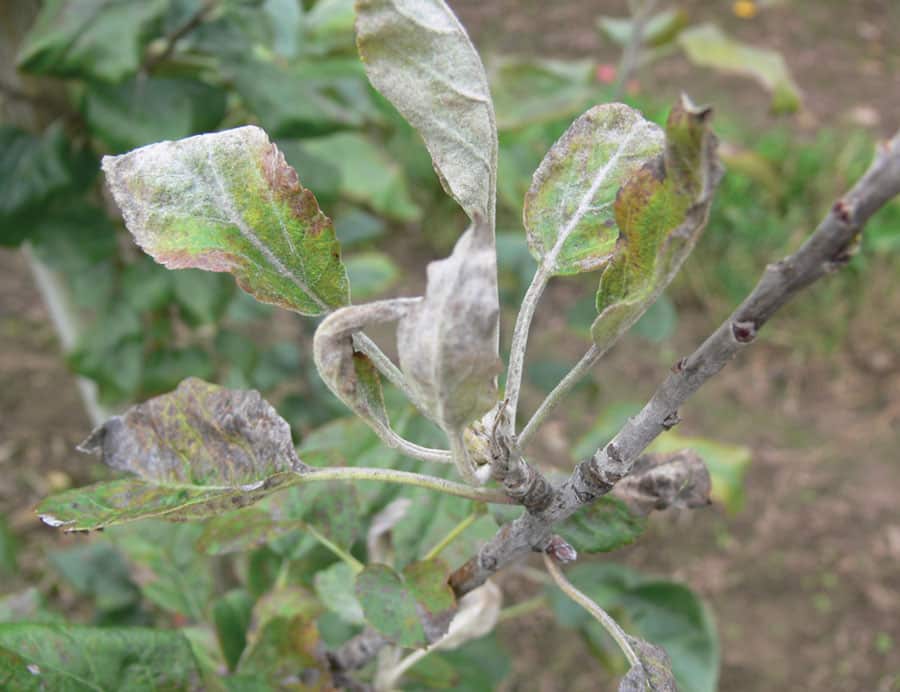
Plum treatment consists in treating trees with biological products, fungicides and folk remedies. Spraying plants with Bordeaux liquid and timely pruning of dry branches are considered preventive methods. Every fall, you need to burn the fallen leaves. In addition, to prevent the appearance of insects after harvesting in the fall, the soil around the plant is dug to a depth of 15-20 cm.
What problems can you face when growing
The main problem is the close planting of seedlings. Also, many gardeners ignore the introduction of fertilizing and the organization of watering. It seems to them that since the plum bears fruit, then everything is fine. But if you don't take care of the plant, very soon the yield will begin to decline. Another problem is improper fit. It is undesirable to plant plums only where there is free space.It is important to choose a place where the plant will feel comfortable. Do not plant plums in the shade.
Plum, like all stone fruit crops, tends to grow. Many gardeners choose not to cut down the young growth. And this must be done. After all, it takes away all the nutrients, and nothing remains for the parent plant.
